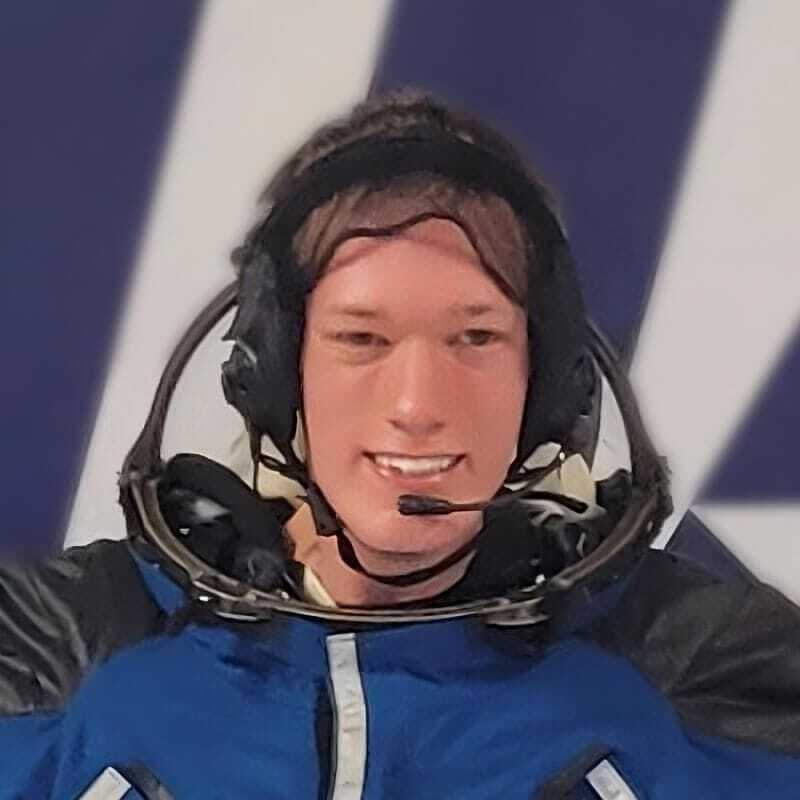On March 31, 2025, SpaceX successfully launched the Fram2 private astronaut mission aboard the Crew Dragon spacecraft named Resilience. This mission marks a significant milestone as it is the first crewed spaceflight to traverse directly over both poles, positioning itself as a groundbreaking event in the history of space exploration.
The Launch Event
The Falcon 9 rocket, which carried the Crew Dragon, lifted off from the Kennedy Space Center at 9:47 p.m. Eastern Time. Approximately ten minutes post-launch, the Crew Dragon separated from the Falcon 9's upper stage, setting it on course for its mission.

A Falcon 9 launched the Fram2 private astronaut mission on March 31, 2025. Credit: Brandon Lindner
Fram2 is particularly noteworthy as it represents the sixth non-NASA flight for Crew Dragon, but it is the first manned mission to achieve a polar orbit with an inclination of 90 degrees. This unique trajectory allows the spacecraft to directly traverse over the North and South Poles while in low Earth orbit, a feat not previously accomplished by crewed missions.
Mission Leadership and Crew Composition
The mission is commanded by Chun Wang, a cryptocurrency entrepreneur originally from China, who now holds citizenship in Malta. In August 2024, he announced the plans for the Fram2 mission in collaboration with SpaceX. Wang's motivation for this endeavor stems from his enduring curiosity about exploring the polar regions, which he often pondered as a child while gazing at blank areas on maps.
Joining Chun Wang in the command team is Jannicke Mikkelsen, a Norwegian cinematographer who acts as the vehicle commander. She is responsible for overseeing Dragon operations, especially during critical phases of the mission like launch and splashdown. The mission pilot is Rabea Rogge from Germany, making her the first German woman to fly into orbit. Alongside overseeing spacecraft displays, Rogge will be gathering scientific data during the journey.
Meanwhile, the mission specialist and medical officer, Eric Philips, is a polar exploration expert from Australia with extensive experience, having visited the poles over 30 times. He described his upcoming trip on the Crew Dragon as a unique opportunity, comparing it to enduring days in a tent during harsh polar conditions.
Scientific Objectives and Experiments
The Fram2 mission is not solely a historical achievement; it includes a diverse array of scientific objectives. It will conduct 22 experiments contributed by eight countries, with research topics ranging from polar aurora observations to crew health assessments and studies on mushroom growth in microgravity environments. Some significant experiments include:
- The first X-ray machine designed for space, aimed at taking medical X-rays and performing equipment inspections.
- A device that facilitates exercise within the limited space of Dragon by reducing blood flow to the legs, thereby maximizing workout effectiveness.
Additionally, the crew will test protocols for exiting the capsule after splashdown, vital for future missions to the Moon and Mars where recovery teams will not be present to assist. SpaceX's vice president of Falcon and Dragon, Jon Edwards, emphasized the importance of this knowledge, stating, “We really want to start understanding what crews are capable of right when they land.”
Revising Splashdown Procedures
After about three and a half days in orbit, the Crew Dragon will return to Earth. This will be the inaugural mission for a Crew Dragon to splash down off the California coast, marking a strategic shift from previous splashdowns which occurred in Florida waters. SpaceX implemented this change following safety concerns over debris resulting from the trunk section of Dragon, which had previously undergone uncontrolled reentry and reached various locations across the globe.
During the mission, the Dragon spacecraft will execute the deorbit burn while still attached to the trunk, after which it will jettison the trunk, ensuring a controlled reentry path. Edwards explained the rationale for the California splashdown, noting that it typically offers improved weather conditions and more predictable ground-level winds, considerations crucial for successful recovery operations.
Comparative Trajectories and Previous Missions
This mission builds on the foundation of previous Crew Dragon operations, including the Inspiration4 and Polaris Dawn missions, both of which did not visit the International Space Station (ISS). The Fram2 mission is utilizing technological advancements established during these initial flights, such as the prominent cupola design first introduced on Inspiration4.
Reflecting on the mission trajectory, Edwards mentioned that the Falcon 9 was programmed to take a unique launch path, avoiding populated landmasses and ensuring safety during any potential emergencies. The vehicle follows a trajectory that bypasses Florida, Cuba, Panama, and Peru, which further bolsters safety for the surrounding regions.

Chun Wang (third from left) is set to command the Fram2 private astronaut mission aboard Crew Dragon. Credit: SpaceX
Future Implications of the Fram2 Mission
The Fram2 mission exemplifies the potential of private space travel and the continuing evolution of human spaceflight. With goals of scientific research, technology testing, and the spirit of exploration, the mission sets the stage for future private initiatives and collaborations in the deep space exploration arena.
Furthermore, the insights gained from the Fram2 mission could lay the groundwork for future developments in space tourism and research, as well as sustainable practices in the transportation of crew and cargo beyond terrestrial borders.
For More Information
For additional details regarding the Fram2 mission and future space endeavors, please explore the following resources:
The exploration of polar regions through the Fram2 mission opens up exciting new frontiers in space travel and research that will enhance our understanding of both earth and the broader universe.






